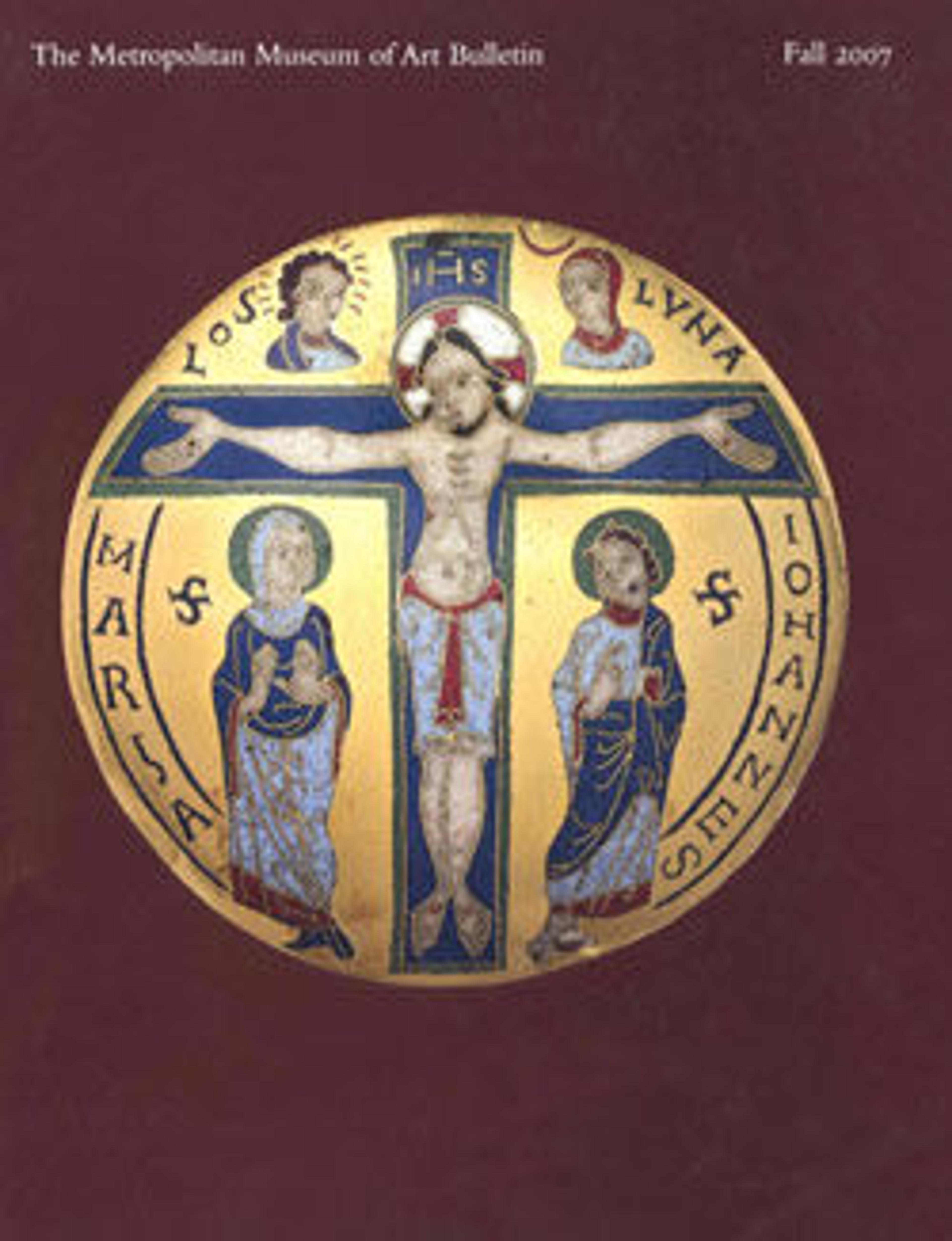Head of Ahmose I
For the Egyptians, two of their greatest kings were Mentuhotep II of Dynasty 11 (ca. 2051–2000 B.C.) and Ahmose I of Dynasty 18. Separated by five centuries, each of these rulers was responsible for reuniting Egypt after a period of disunity, one ushering in the Middle Kingdom and one the New Kingdom.
This slightly over-lifesize head represents Ahmose I wearing the white crown, a symbol of upper Egypt. The face is broad and relatively flat, with a taut, smiling mouth. These features seem to be influenced by representations of Mentuhotep II whose statues still would have been prominent at Thebes in Ahmose's time, and it is no wonder that Ahmose chose to emulate his illustrious predecessor. The large, slanting, prominent eyes, however, convey an intensity that seems to herald the energetic Thutmoside style of Dynasty 18.
This slightly over-lifesize head represents Ahmose I wearing the white crown, a symbol of upper Egypt. The face is broad and relatively flat, with a taut, smiling mouth. These features seem to be influenced by representations of Mentuhotep II whose statues still would have been prominent at Thebes in Ahmose's time, and it is no wonder that Ahmose chose to emulate his illustrious predecessor. The large, slanting, prominent eyes, however, convey an intensity that seems to herald the energetic Thutmoside style of Dynasty 18.
Artwork Details
- Title:Head of Ahmose I
- Period:New Kingdom
- Dynasty:Dynasty 18, early
- Reign:reign of Ahmose I
- Date:ca. 1550–1525 B.C.
- Geography:From Egypt
- Medium:Limestone
- Dimensions:H. 56 cm (22 1/16 in); d. 36.2 cm (14 1/4 in.)
- Credit Line:Gift of Nanette R. Kelekian, in memory of Beatrice and Charles Dikran Kelekian, 2006
- Object Number:2006.270
- Curatorial Department: Egyptian Art
More Artwork
Research Resources
The Met provides unparalleled resources for research and welcomes an international community of students and scholars. The Met's Open Access API is where creators and researchers can connect to the The Met collection. Open Access data and public domain images are available for unrestricted commercial and noncommercial use without permission or fee.
To request images under copyright and other restrictions, please use this Image Request form.
Feedback
We continue to research and examine historical and cultural context for objects in The Met collection. If you have comments or questions about this object record, please contact us using the form below. The Museum looks forward to receiving your comments.
